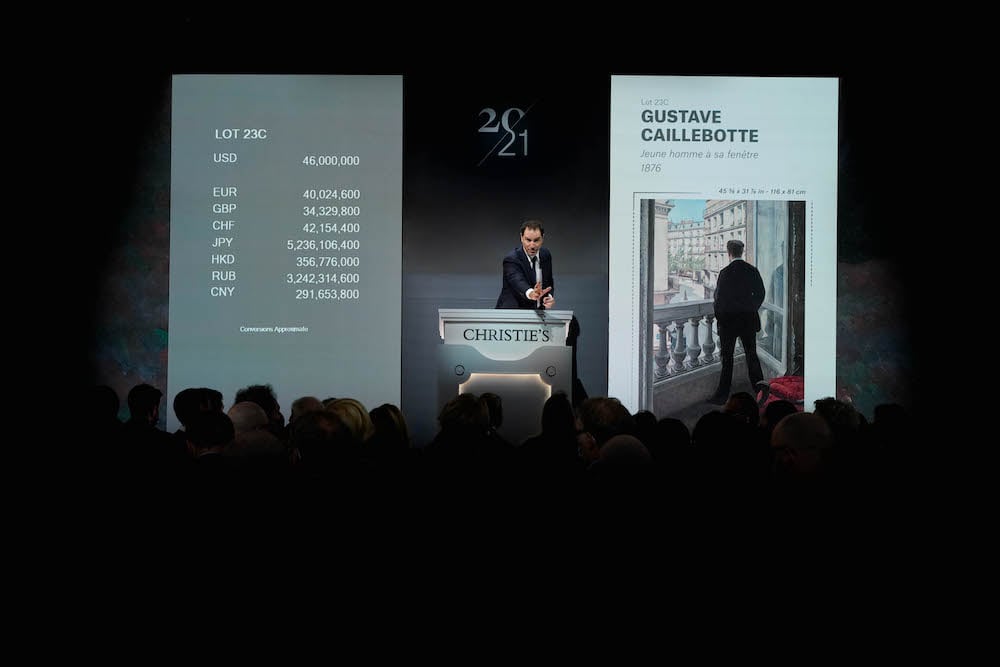In a sale that signaled the full-throated return of the art market’s highest echelon, Christie’s made $751.9 million across two back-to-back sales on Thursday evening. It was the second-highest total for an auction ever notched in a single evening (second only to the 2017 evening sale in which Christie’s sold Salvator Mundi, generating $786 million).
The total came in just over the rosiest combined estimate for the event, $738.6 million. (Final prices include the buyer’s premium; estimates do not.) It was a perfect storm: confidence among buyers and sellers was high; concerns about inflation motivated people to spend on art; and, perhaps most importantly, fresh-to-market, top-quality material was abundant.
Christie’s newly outfitted salesroom—notably smaller than usual to allow for capped attendance—is virtually unrecognizable to anyone used to the house’s Chippendale-style wooden rostrums and phone banks. It feels more like a movie set now, with large screens beaming in specialists from abroad, sophisticated lighting giving artworks an ethereal glow, and cameras everywhere. A marker of the livestream era, the auctioneer even announced when the room went “live.”
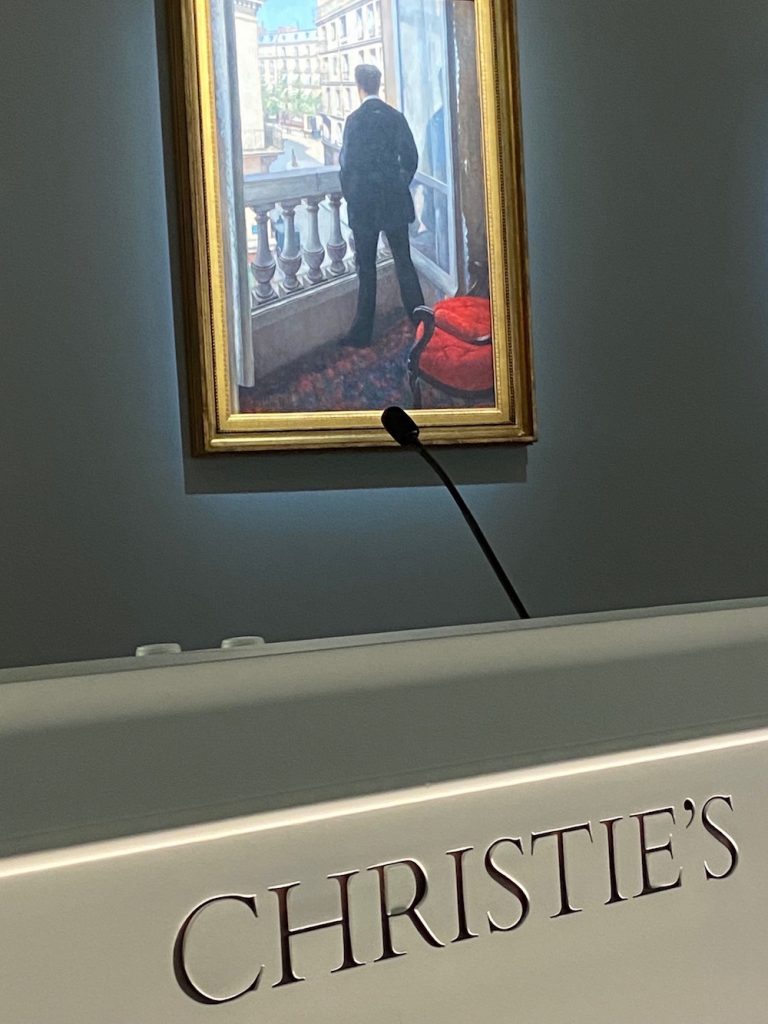
Christie’s salesroom at Rockefeller Center on November 11, 2020. Photo by Eileen Kinsella.
The sale started with a collection of Impressionist works amassed by the late Texas oil magnate Edwin Cox. Some wondered in advance how fiercely collectors would compete for a body of work that is no longer considered exceedingly fashionable. Now they have their answer: very. Twenty-one phone bidders registered for the first lot alone.
All 23 works in the collection had been guaranteed by the house; outside backers stepped in to take on the risk for three of them. Guaranteed lots can often make a sale feel like an orchestrated affair, but that was not the case tonight. Bidding was extraordinarily competitive on nearly every work, spanning customers in the room, online, and via specialists in Hong Kong and London.
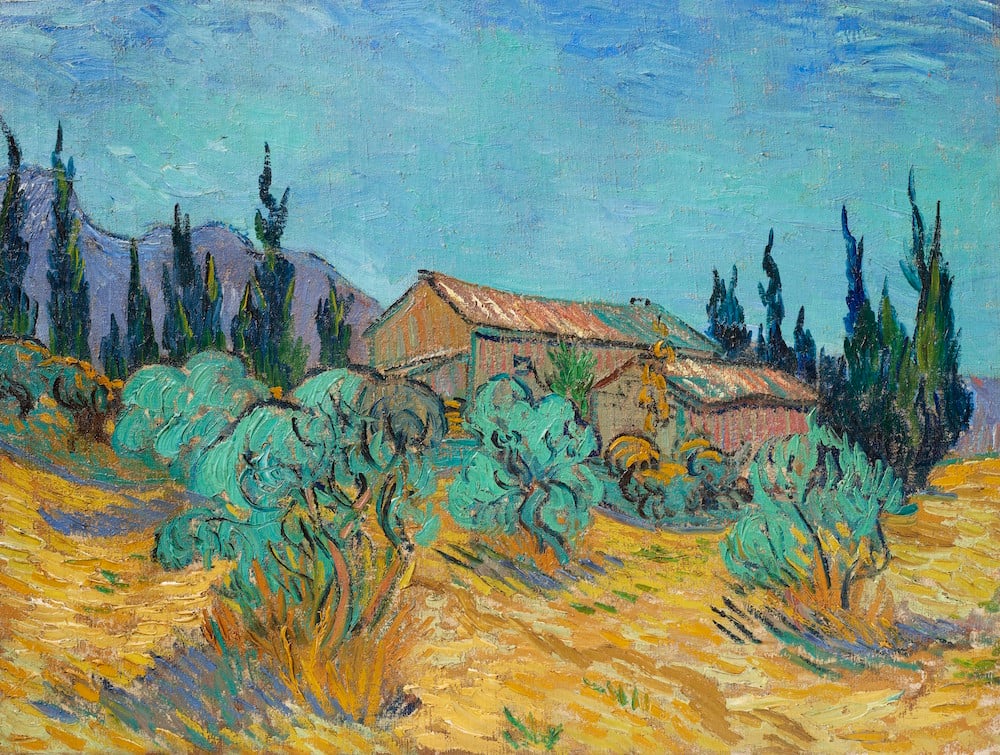
Vincent van Gogh, Cabanes de bois parmi les oliviers et cyprès (1889). Image courtesy Christie’s.
The sale pulled in a total of $332 million with premium, surpassing the $267.6 million high estimate. According to Christie’s, just over half the works went to collectors based in the Americas, 35 percent went to Europe, and 13 percent went to Asia.
Three of the star lots were by Vincent van Gogh. The highest price of the evening, $71.4 million, was paid for Cabanes de bois parmi les oliviers et cyprès (1889) after a seven-bidder battle. The haystack painting Meules de blé (1888) followed four lots later, climbing to a final price of $35.9 million. Both works were acquired by Hugo Nathan, a founding partner of the London advisory firm Beaumont Nathan. He could not immediately be reached for comment on whether they were purchased for the same client.
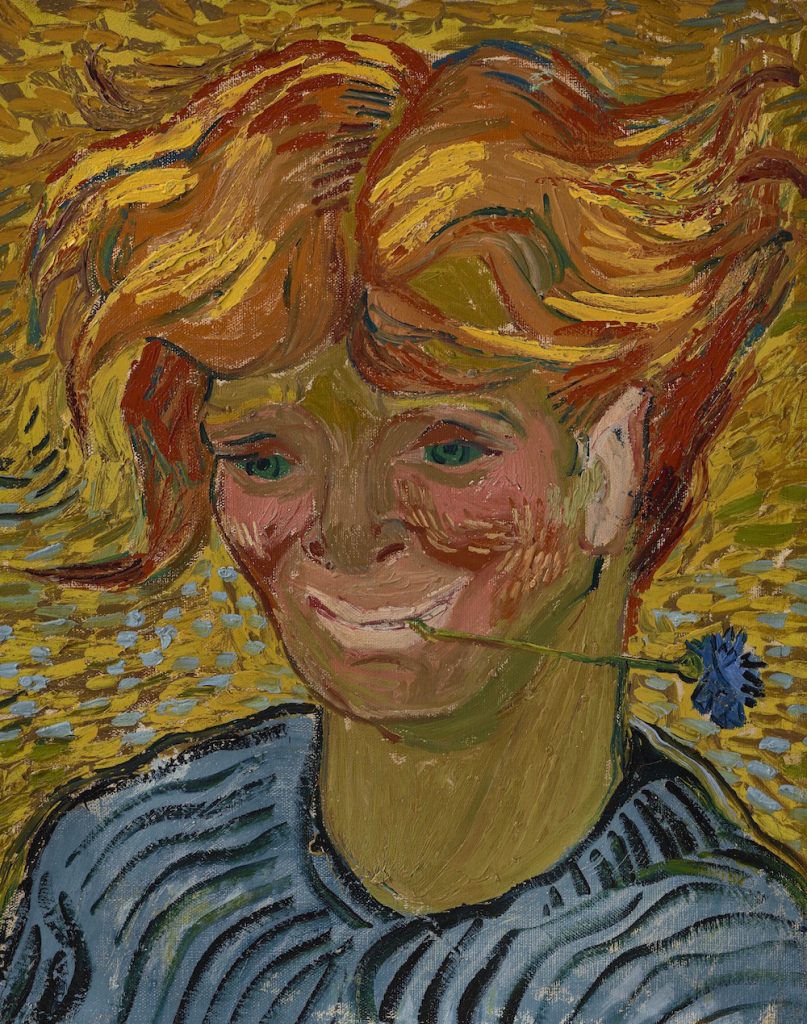
Vincent Van Gogh, Jeune homme au bleuet (1890). Image courtesy Christie’s.
Another, far less typical (and, it seems fair to say, less attractive) work by Van Gogh—a portrait of a rosy-cheeked young man with a cornflower between his lips—also shattered expectations. Estimated for $5 million to $7 million, it went to a specialist in New York for $40.5 million, more than six times expectations, after heated competition among Asian bidders.
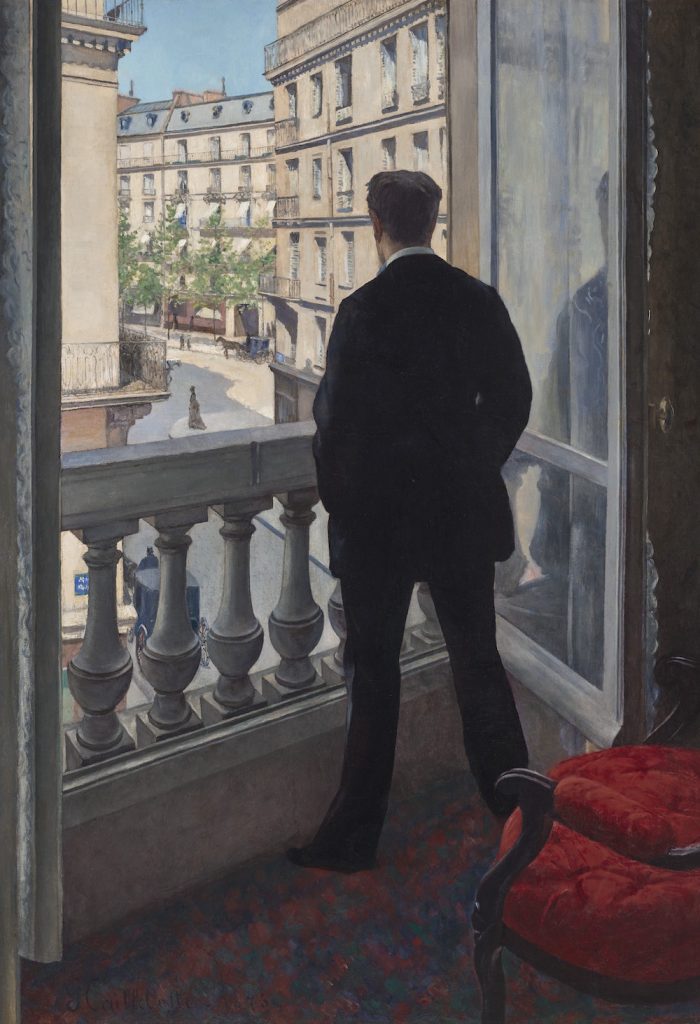
Gustave Caillebotte, Jeune homme àsa fenêtre (1876). Image courtesy Christie’s.
The Getty Museum purchased the final lot of the Cox sale, Gustave Caillebotte’s Jeune homme à sa fenêtre (1876), a rare and imposing painting of the artist’s brother gazing out a window from the family’s residence in Paris. Expected to bring above $50 million, it sold for a premium-inclusive $53 million, shattering the artist’s existing auction record of $22 million.
“This extraordinary painting exemplifies Caillebotte’s carefully constructed and sharp-edged brand of urban realism,” Getty director Timothy Potts said in a statement. The painting will go on view at the museum in 2022.
After a brief break and a handover of the rostrum to veteran auctioneer Jussi Pylkkänen, Christie’s moved on to its nearly 60-lot marathon 20th century sale, a reflection of the newly reorganized categories by which it now presents trophy evening auctions.
The official estimate was revised down slightly after one lot, a work by Alexander Calder, was withdrawn. In all, the sale made $419.9 million, landing in the middle of expectations. (For comparison, Christie’s 20th century evening sale this past spring made $481 million, while its 20th century sale last October made $341 million.)
Of the 58 lots on offer, roughly a dozen carried irrevocable bids, or third-party guarantees, meaning they were essentially pre-sold.
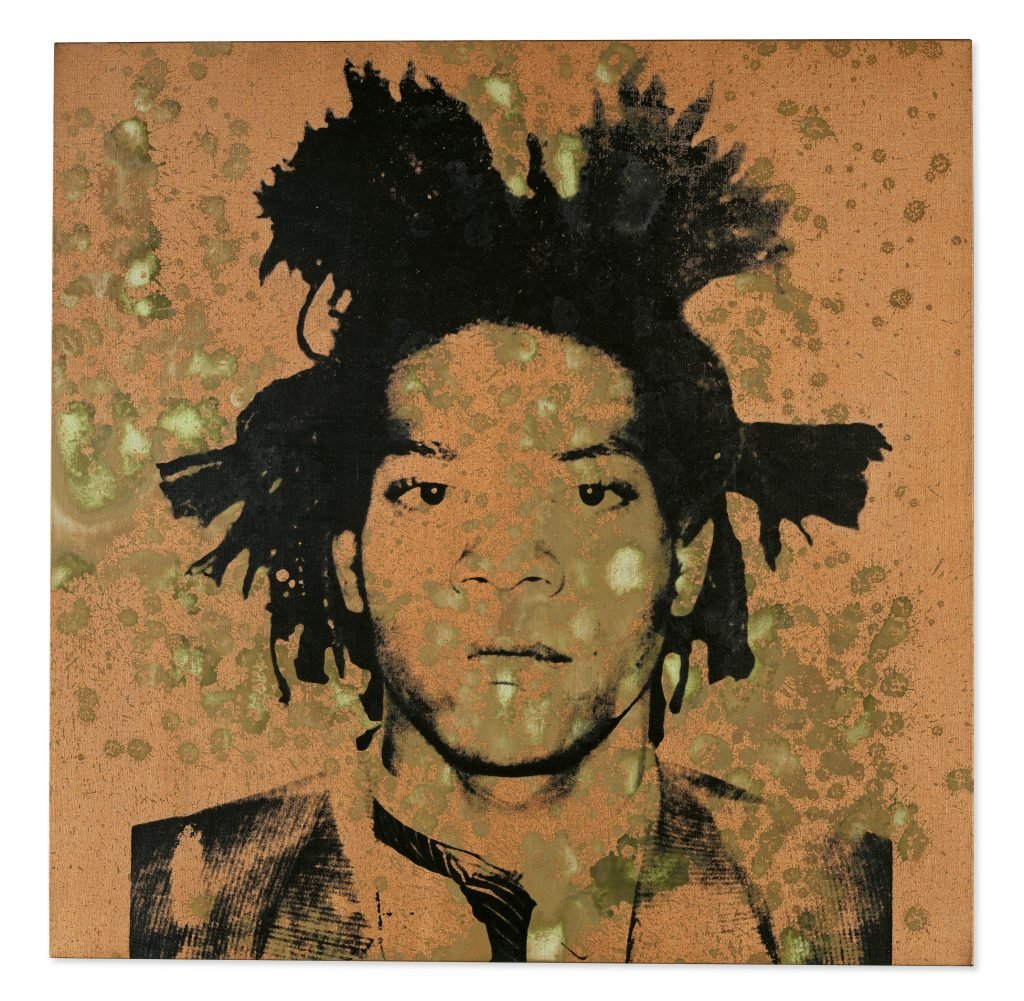
Andy Warhol, Jean-Michel Basquiat (1982). Courtesy of Christie’s Images, Ltd.
One of these third-party backed works was the top lot of the sale, Andy Warhol’s 1982 silkscreen portrait of contemporary art star Jean-Michel Basquiat, estimated to take around $20 million. It was consigned by top collector Peter Brant.
Christie’s pulled out all the stops to advertise the work, even unveiling it at the Basquiat-themed Crown Club at the Barclay’s Center in Brooklyn. After it sold to a client of Alex Rotter, chairman of Christie’s 20/21 art departments, for a premium-inclusive $40 million, he pumped his fist in the air.
There was also considerable energy for American sculptor Lee Bontecou, whose gripping, three-dimensional wall work fetched a record $9.2 million, more than doubling its high estimate and obliterating her previous record of $1.9 million, set in 2010.
Echoing the results of Tuesday’s 21st century sale, however, the appetite for classic contemporary works by the market’s white male titans was relatively muted. Gerhard Richter’s Abstraktes Bild (1988) sold for a premium-inclusive $27.2 million, on the low end of its $25 million-to-$35 million estimate range, likely to its third-party guarantor. Like Ed Ruscha’s Ripe and Cy Twombly’s untitled 1961 painting, two other top lots of the evening, there was little competition.
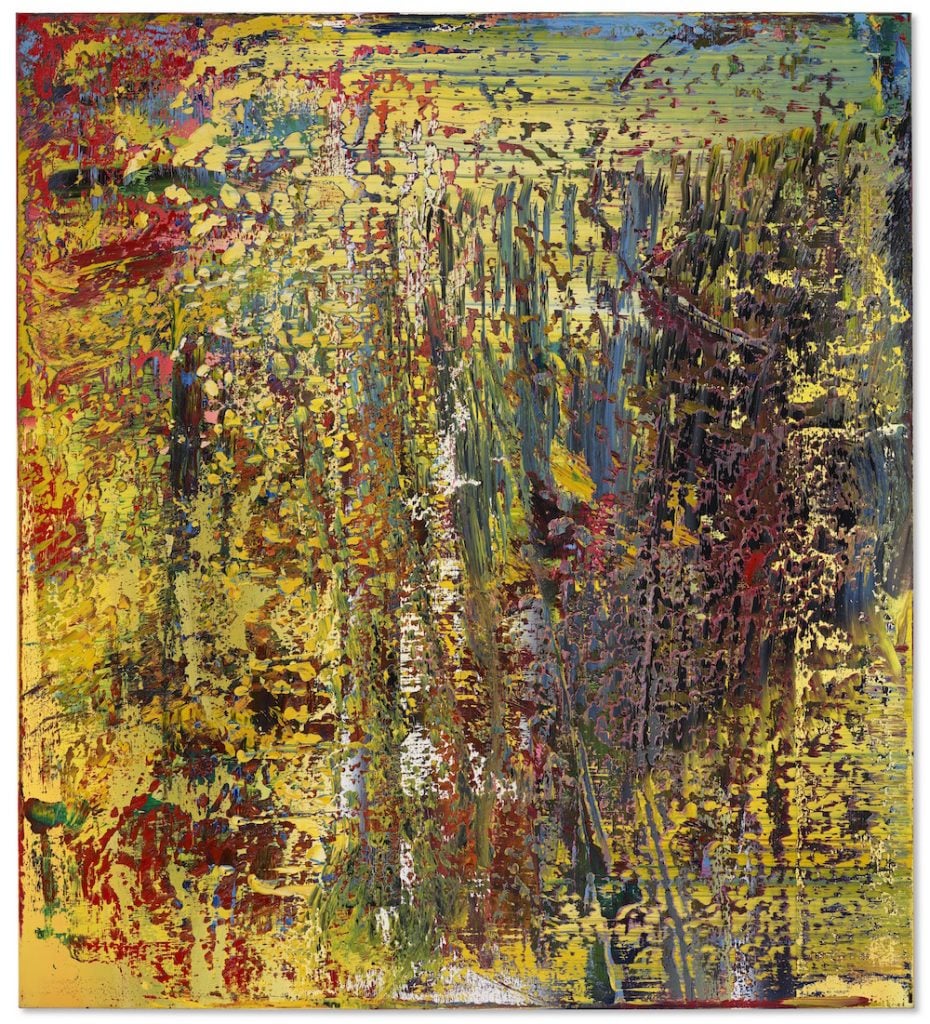
Gerhard Richter, Abstraktes Bild (1988). Image courtesy Christie’s.
Picasso also had a measured performance this evening. Homme a la pipe (1968) took $15.4 million, scraping the low end of the $15 million-to-$20 million estimate. It appears to have been consigned by art dealer Helly Nahmad, who exhibited it in his booth at Art Basel Miami Beach in 2019. The gallery did not respond to Artnet News’s request for comment.
Nahmad was seen bidding on, but was not the winner of, another Picasso on offer, Profil (1930), sold by the Regents of the University of California to benefit future acquisitions for the UCLA Grunwald Center and Hammer Museum. It sold for $7.3 million on an estimate of $6 million to $8 million.
